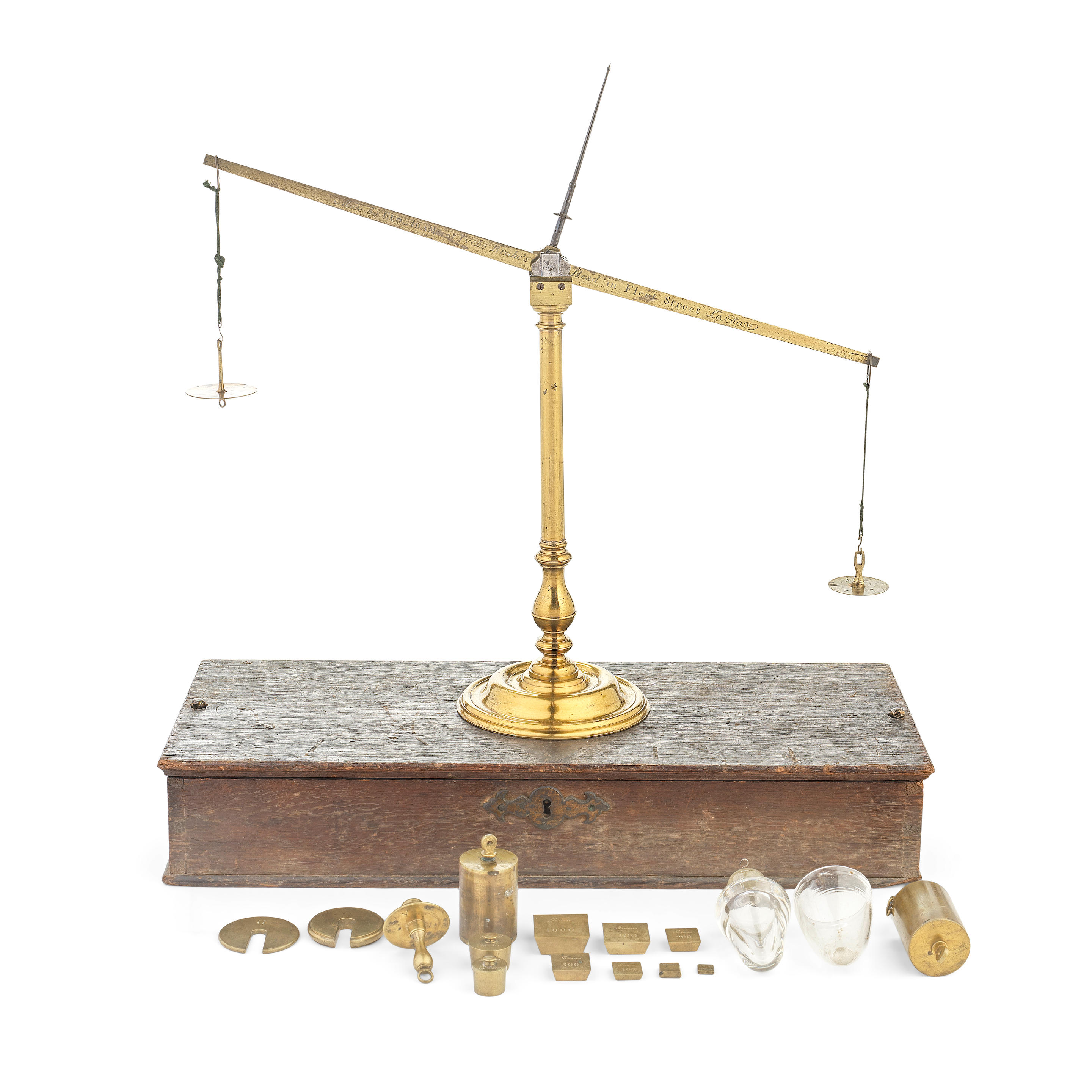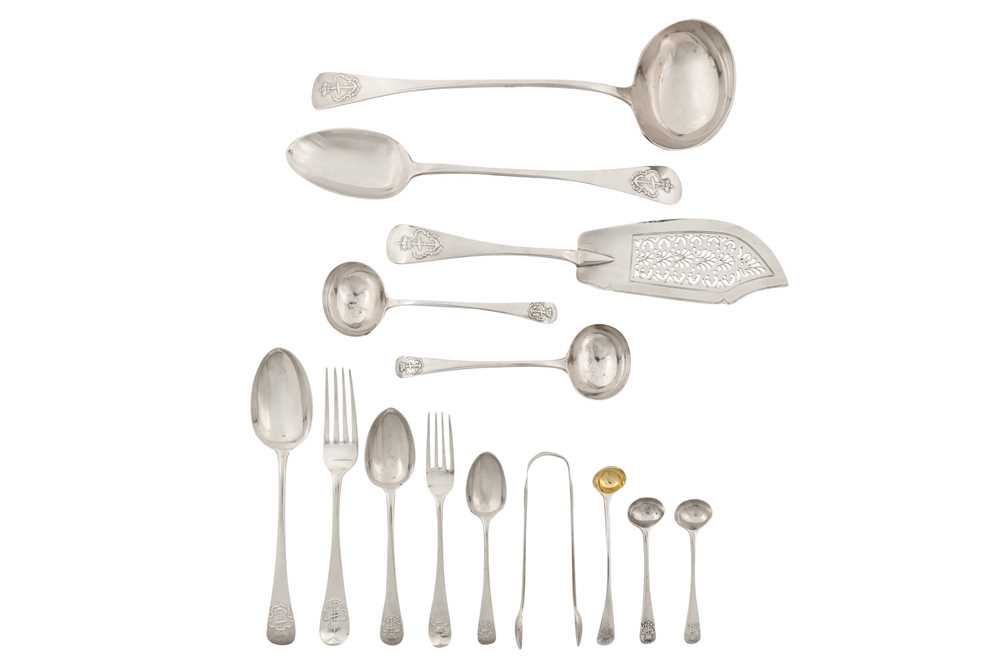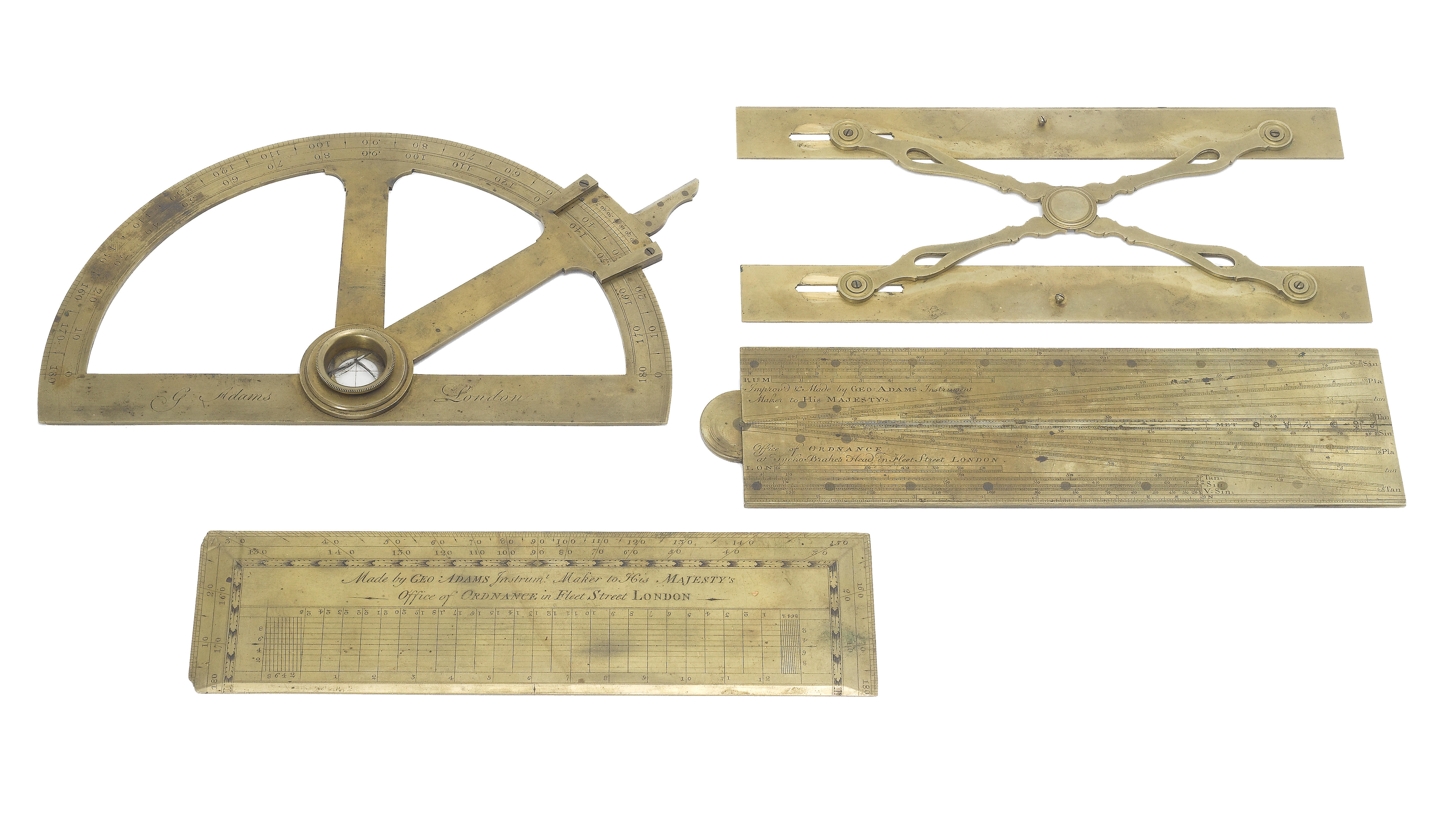A George Adams Senior Sissons-type Beam Compass, English, circa 1760,signed Made by Geo. Adams Instrument Maker to His Royal Highness GEORGE Prince of Wales London, the brass compass with one fixed and one sliding pointer with Vernier scale and worm screw adjustment, scale divided into 71 and 94 equal parts and divided into two sections for storage, in fitted mahogany case with vacant aperture for storage of a pen, case 15 1/2 in (39.5cm) long,
instrument 24 1/2in (62cm) long when constructed FootnotesThe beam compass was used for the setting off or transferring of precise measurements, for graduating scales or for drawing curves of large radius.
Writing in 1791, George Adams Jnr (1750-1795) describes this instrument as 'Sisson's protracting scale'. Six years later William Jones who had bought the rights to Adams's book, described the instrument in more detail. The scales have been divided into three and four chains in an inch and each of these subdivided into ten links which, with the Vernier, can be set to single links. When surveying with a Gunter's chain the measurement can be directly set on the beam compass for accurately transferring to a plan. The surveying chain, invented by Edmund Gunter (1581-1626), consisted of 100 links and was 66 feet long.
The dating is established by noting that King George III (1738-1820) became Prince of Wales in 1750 and King in 1760. He came of maturity in the middle of 1756 and was thus able to run his own household and make appointments. George Adams Snr. (1709-1772) was appointed as Instrument Maker to the Prince late in 1756.
Literature:
cf. John R. Millburn, Adams of Fleet Street, Instrument Makers to King George III, Aldershot 2000.
cf. George Adams, Geometrical and Graphical Essays, London, 1791.
Exhibited:
Scientific Instrument Society 25th anniversary exhibition, Museum of the History of Science, Oxford, 2008.
A George Adams Senior Sissons-type Beam Compass, English, circa 1760,signed Made by Geo. Adams Instrument Maker to His Royal Highness GEORGE Prince of Wales London, the brass compass with one fixed and one sliding pointer with Vernier scale and worm screw adjustment, scale divided into 71 and 94 equal parts and divided into two sections for storage, in fitted mahogany case with vacant aperture for storage of a pen, case 15 1/2 in (39.5cm) long,
instrument 24 1/2in (62cm) long when constructed FootnotesThe beam compass was used for the setting off or transferring of precise measurements, for graduating scales or for drawing curves of large radius.
Writing in 1791, George Adams Jnr (1750-1795) describes this instrument as 'Sisson's protracting scale'. Six years later William Jones who had bought the rights to Adams's book, described the instrument in more detail. The scales have been divided into three and four chains in an inch and each of these subdivided into ten links which, with the Vernier, can be set to single links. When surveying with a Gunter's chain the measurement can be directly set on the beam compass for accurately transferring to a plan. The surveying chain, invented by Edmund Gunter (1581-1626), consisted of 100 links and was 66 feet long.
The dating is established by noting that King George III (1738-1820) became Prince of Wales in 1750 and King in 1760. He came of maturity in the middle of 1756 and was thus able to run his own household and make appointments. George Adams Snr. (1709-1772) was appointed as Instrument Maker to the Prince late in 1756.
Literature:
cf. John R. Millburn, Adams of Fleet Street, Instrument Makers to King George III, Aldershot 2000.
cf. George Adams, Geometrical and Graphical Essays, London, 1791.
Exhibited:
Scientific Instrument Society 25th anniversary exhibition, Museum of the History of Science, Oxford, 2008.















Try LotSearch and its premium features for 7 days - without any costs!
Be notified automatically about new items in upcoming auctions.
Create an alert